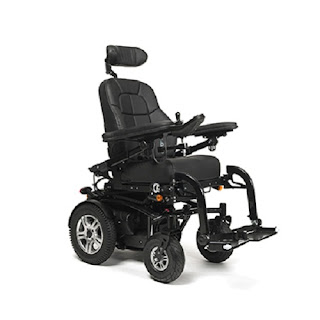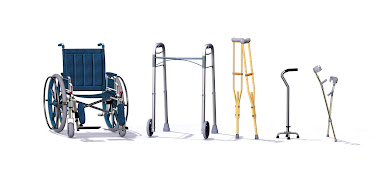Using a walker can significantly improve mobility and independence, but it’s essential to use it correctly. Many people, especially first-time users, make certain mistakes that can affect their safety and comfort. In this blog, we’ll discuss the most common mistakes people make with their walkers, how to avoid them, and why choosing the right walker in NZ is crucial for ensuring smooth mobility.
Choosing the Wrong Size Walker
One of the most common errors is selecting the wrong size walker. Walkers come in different sizes to fit various body types and needs. A walker that is too tall or too short can cause unnecessary strain on your body, leading to discomfort or even injuries.
When selecting a walker, it's essential to ensure that its handles align with your wrists when your arms are relaxed at your sides. This alignment ensures that you’re not bending too much or straining to reach the handles, which can affect your posture and mobility.
Solution: Get Professionally Fitted
For first-time walker purchasers, professional fitting is recommended to ensure proper size, reduce stress, and improve walker effectiveness.
Incorrect Posture While Using the Walker
Another mistake people make is failing to maintain proper posture while using their walker. Leaning too far forward, slouching, or hunching over can cause balance issues and put extra pressure on your spine and joints.
Maintaining an upright posture ensures you distribute your weight evenly and prevent potential injuries. When using a walker in NZ, stand tall and avoid bending excessively at the waist. Keep your eyes forward instead of looking down, which will help maintain balance.
Solution: Practice Proper Walking Techniques
Take time to practice walking with your walker. Focus on keeping your back straight and your core engaged. If needed, work with a physical therapist to help you master the correct technique.
Moving Too Quickly
Walkers are designed to help you move safely at a controlled pace. Rushing while using a walker can lead to instability and increase the risk of falling. It’s tempting to hurry when you’re in a rush, but it’s important to prioritise safety.
Moving too quickly can also cause the walker to wobble or shift, particularly on uneven surfaces. Always take your time indoors or outdoors, and ensure that all four legs of the walker are securely on the ground before taking the next step.
Solution: Slow Down and Be Mindful
Taking slow, deliberate steps is the key to avoiding accidents with a walker. Focus on your surroundings and ensure your walker nz is stable before each step. With practice, you’ll find a steady pace that allows for safe and efficient movement.
Failing to Use the Walker Properly Indoors
Walkers are essential for navigating indoor and outdoor spaces, but some people need help to adjust their walker use when moving indoors. Cluttered spaces, narrow hallways, and furniture can become obstacles, making maneuvering harder.
Solution: Adapt Your Space and Choose the Right Type
To ensure smooth indoor navigation, clear your pathways and remove obstacles blocking your walker in NZ. Consider choosing a wheeled walker or a more compact design that allows for easy movement in tight areas.
Ignoring Regular Maintenance
Finally, many people need to pay more attention to the regular maintenance of their walkers. Over time, walkers can wear down, affecting their stability and reliability. Loose screws, worn-out rubber tips, or faulty brakes on wheeled walkers can increase the risk of accidents.
Conclusion
Using a walker can be life-changing for maintaining independence, but avoiding common mistakes is key to getting the most out of your device. By selecting the right walker in NZ, maintaining proper posture, moving at a safe pace, and ensuring regular maintenance, you'll improve your safety and comfort. Remember, it’s always worth consulting professionals when choosing or adjusting a walker to ensure it suits your unique needs.




Comments
Post a Comment